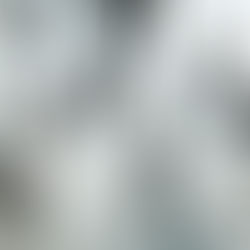Christmas in the curriculum!

The weather has changed, the nights are drawing in and the supermarkets are full of tins of biscuits....it’s that time of year again! Staying positive and making lessons fun on the run up to the Christmas break can be tricky, especially when you are being asked to provide data/ evidence for progress while classes beg for something seasonal to do. Here are a few of my all-time favourite Christmas with education rationale activities for you to consider as you plan the last few weeks of term. They are not new, they are not original, but they are fun and they most definitely are STEM – Science, Technology, Engineering and Maths.
1. Christmas chromatography
This can done for all ages with varying degrees of science such as calculating Rf values, separation techniques or even in terms of food safety and food colourings if you teach an applied course or food technology. Use either food colouring, water soluble felt tips or my personal favourite is sweets like Skittle’s or M&M's in a spotting tile with a few drops of water and a thin pipette. Depending on how much time you have, pupils can cut shapes out of the filter paper and rotate them in beakers, or cut out shapes after the filter paper has dried.
2. Balloon powered Santa Sleighs
Templates are available online for sleigh outlines, or pupils could design their own aerodynamic sleigh around a balloon. If you stick a small piece of straw about 5cm long on the balloon, but cut open the top part, you can hook it onto a piece of string easily and it will guide the sleigh in one direction. You could relate this to streamlining or air pressure in a lower key stage e.g. what happens if we inflate the balloon more or less? Etc. Or use it to calculate speed by measuring the distance it travels down the string and the time it takes to travel that distance- physics AND maths! You could film the sleigh in action, then slow it down and sketch distance time graphs or speed time graphs with more able pupils.
3. Christmas coordinates
There are some readymade examples online, but these are not difficult to make yourself. Depending on the ability range of your pupils, you can give them coordinates to plot on squared or graph paper to form shapes such as Christmas trees. For more able pupils, multiple sets of coordinates or even four quadrants/ negative axis can be used, or they can design their own!
4.Winter wonderland/growing crystals
This can be done with borax which works brilliantly if you have pupils that won’t touch the crystals that form afterwards, or salt for a safer option. This is a little less ordinary so here are the instructions; Cut out cardboard shapes, slot pieces together to make them 3D and place in a tray, make a saturated solution of salt and water or borax and water, then pour over the cardboard shapes leaving excess in the tray. Over a few days the water will evaporate and crystals will form on the cardboard looking like a layer of frost or snow- very festive! Keep it cool for slower evaporation and larger crystal formation.
You can teach dissolving, changes of state or even macromolecules and bonding with this practical- easy and fun for all key stages! You can make it into an investigation comparing different amounts of salt in water or compare different conditions using the same amounts such as cold store cupboard, window sills or near the heater. Even the sizes of crystals or dry mass can be measured, and then represented in a graph.
Have fun and enjoy the festivities while still encouraging a good learning environment!


















